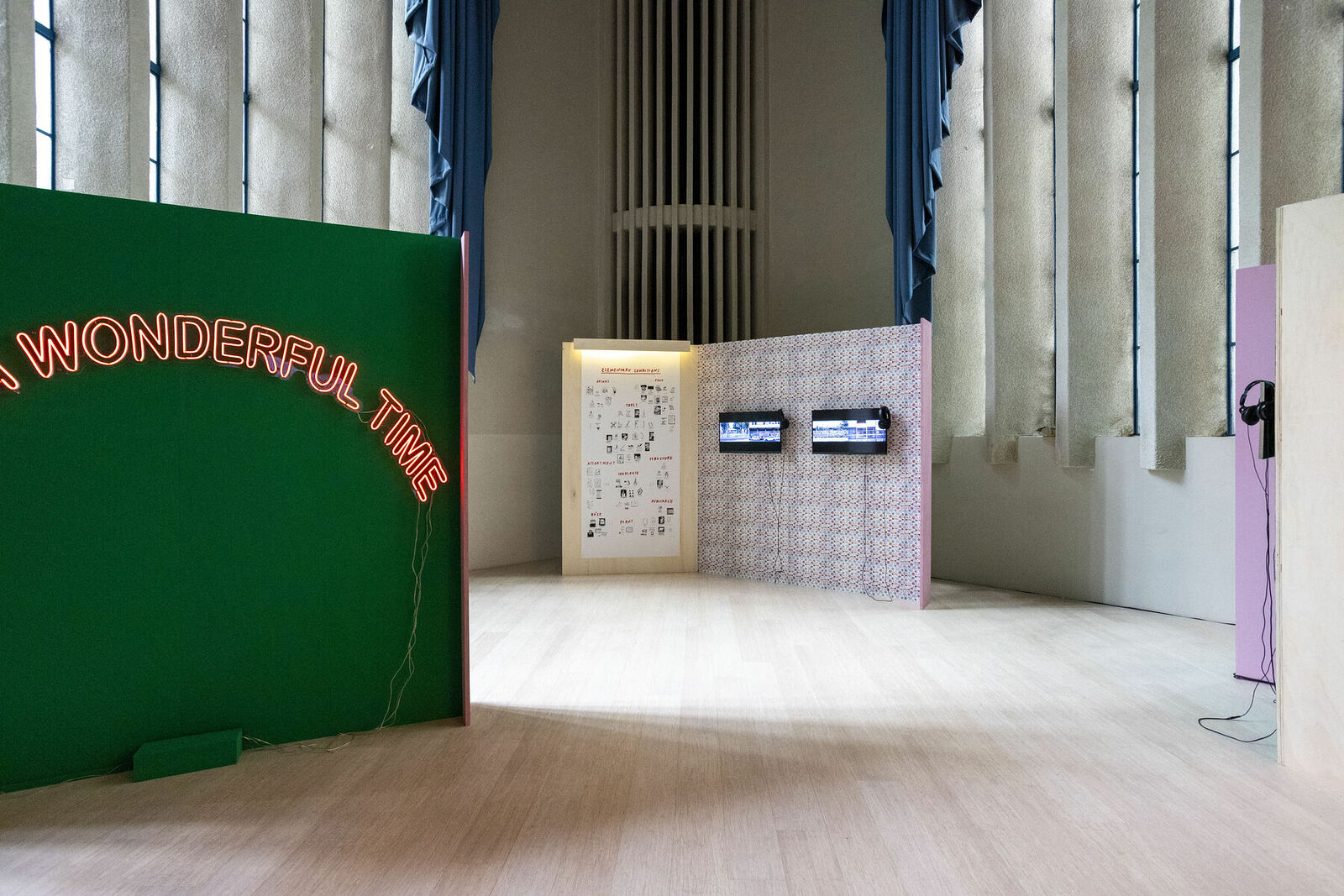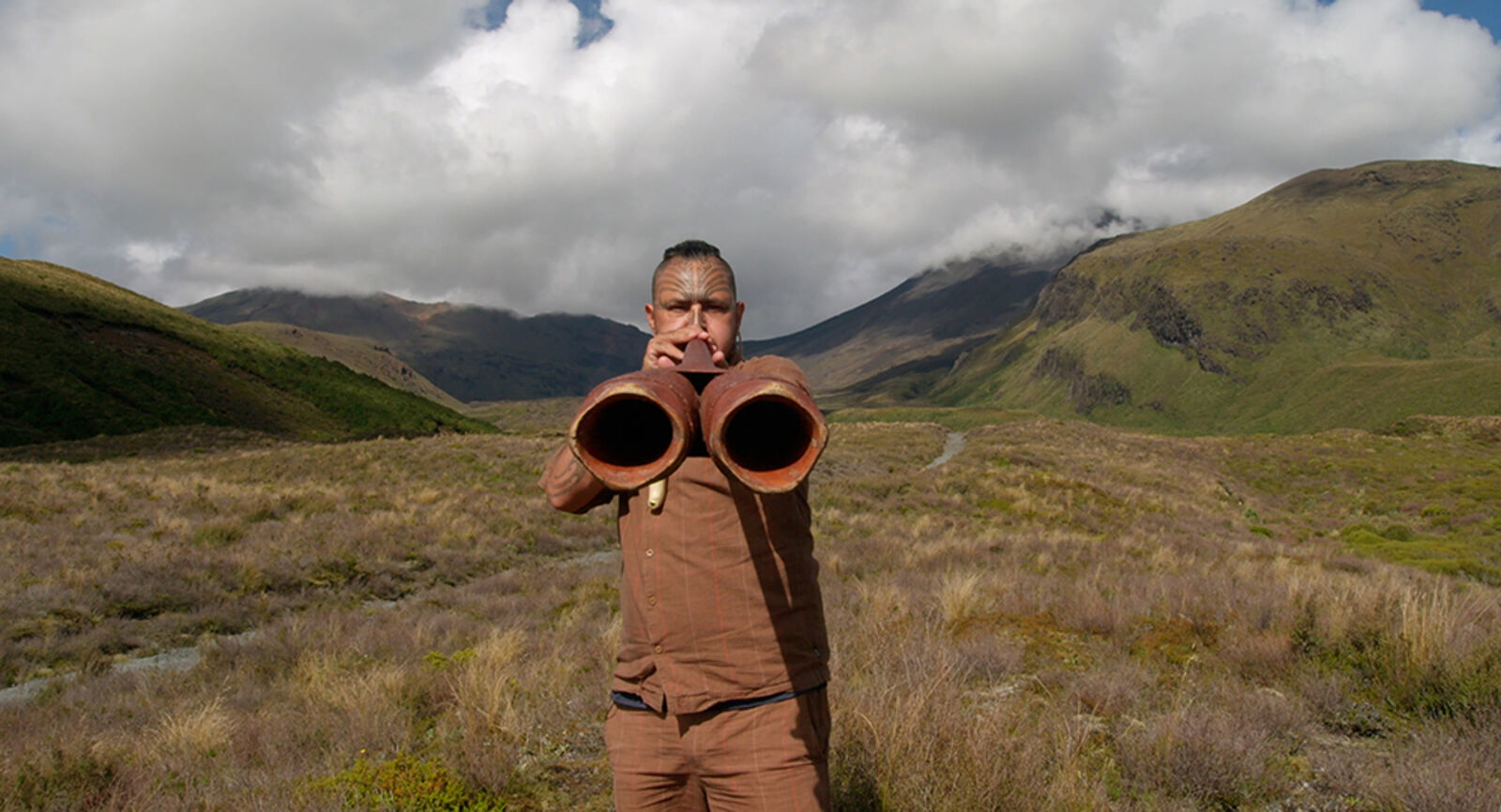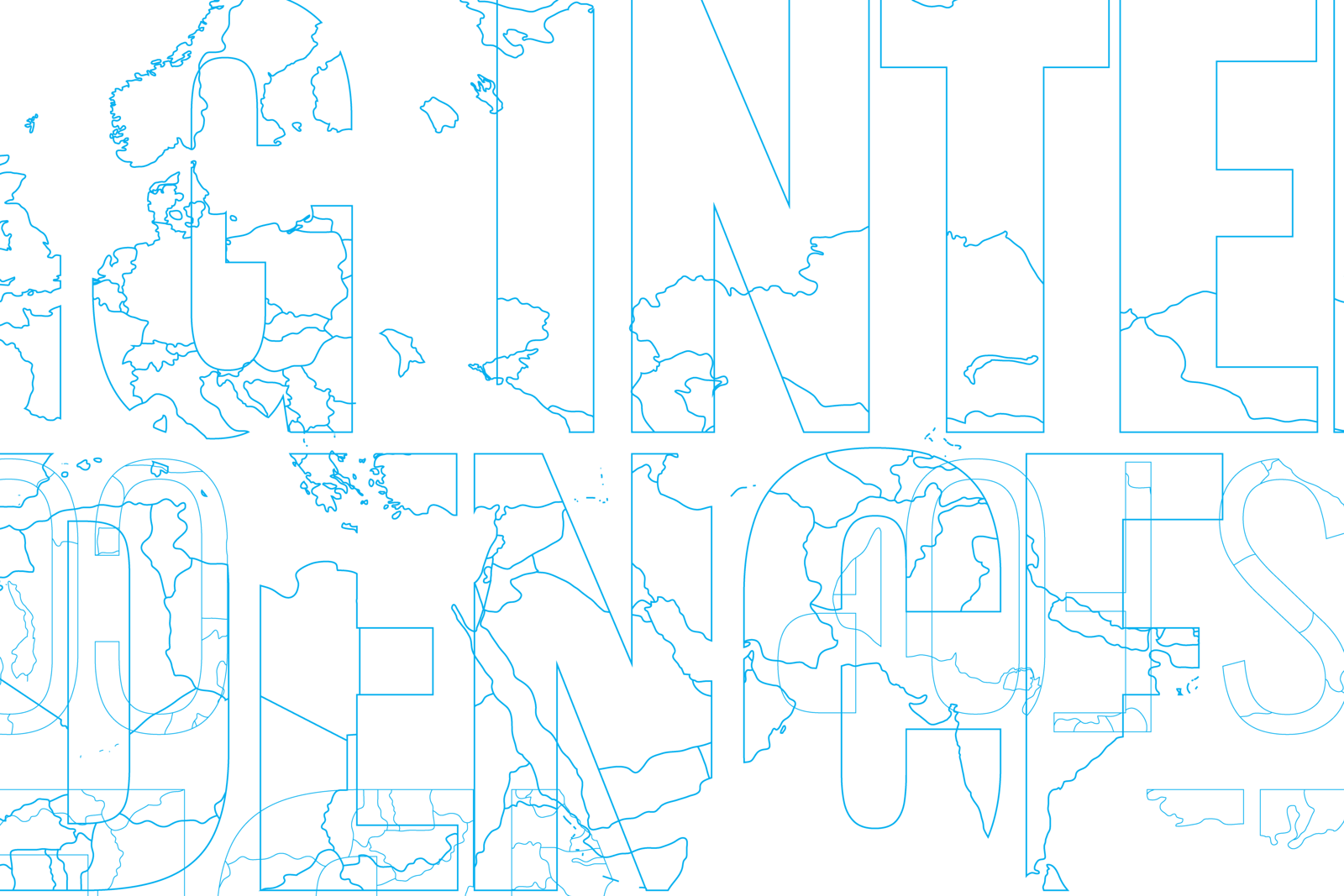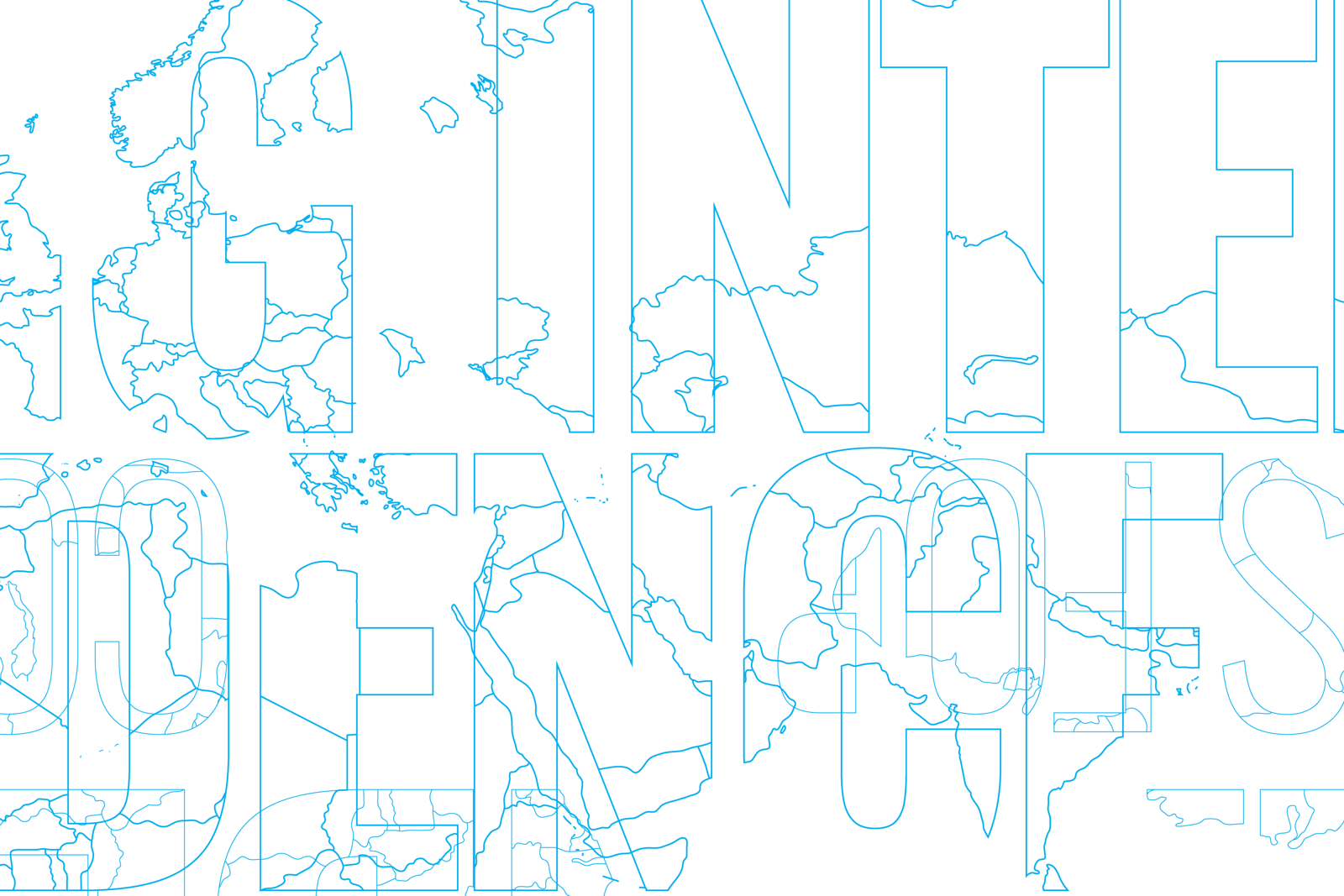Sensing Interdependence
14:00–20:00
Opening: Friday 27 June, 6-9pm
de Appel, Tolstraat 160, Amsterdam
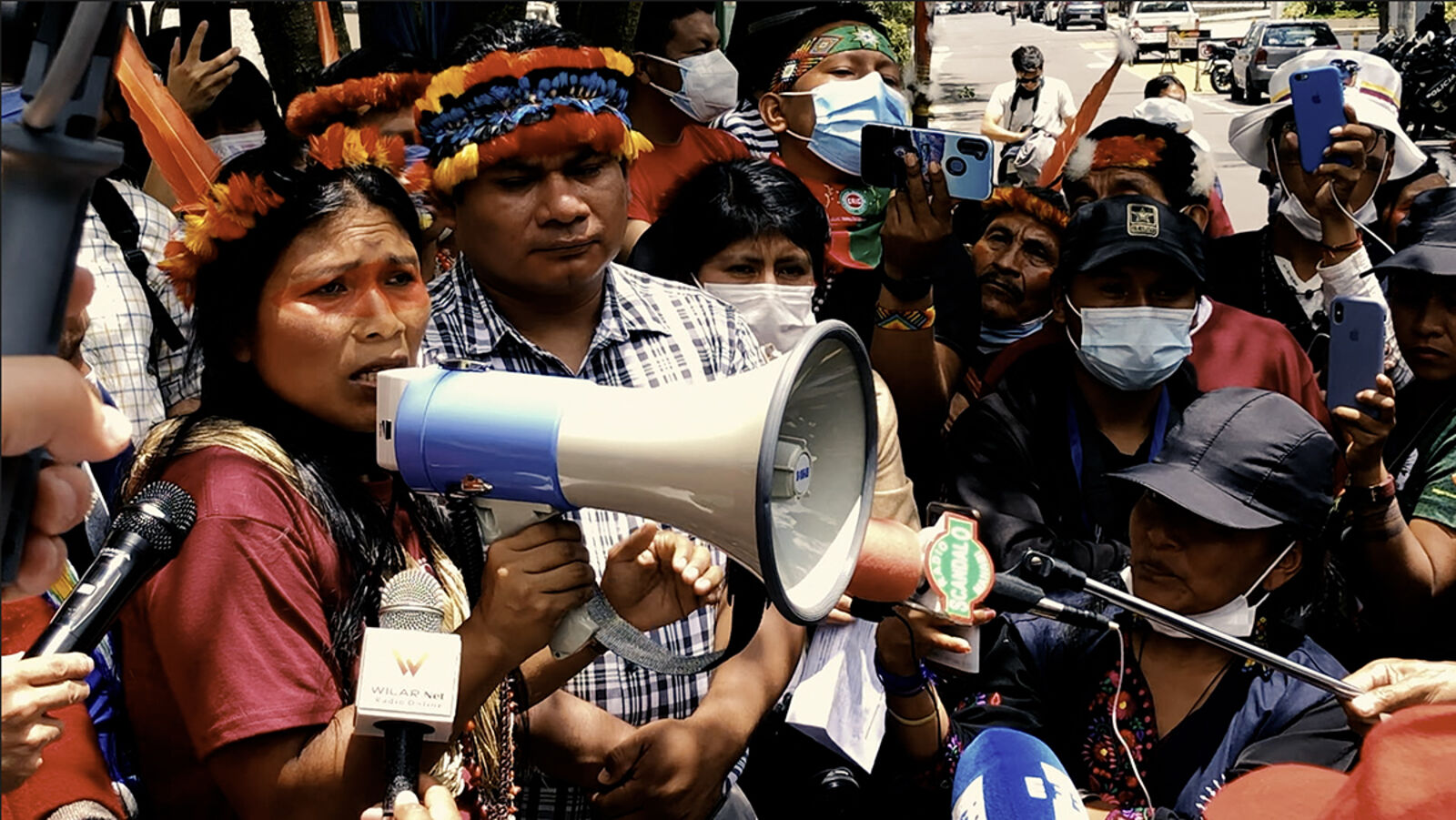
ACTIVISMUS, A4C – ArtsForTheCommons, Still from digital video, 4'58", 2022–2024
With art collective Arts For the Commons (A4C): Rosa Jijón and Francesco Martone
Curated by Aria Spinelli and Angelo Castucci
Sensing Interdependence is a retrospective exhibition on the work of the Italian art collective Arts For the Commons (A4C), a collaboration between Ecuadorian artist Rosa Jijón and activist and artistic researcher Francesco Martone. The exhibition tackles the notion of interdependence between nature and humans. It is guest-curated by Aria Spinelli and Angelo Castucci.
Through the perspective of A4C’s artistic methodology, the exhibition proposes to rethink interconnected empathic, tactile, and political relations in the context of the rights of nature and the rights of people(s). The works on show ask audiences to harness interdependency in order to navigate the complexities of climate justice, resistance against extractivism, the legal personhood of ecosystems, and new institutional art forms in the ecological crises of our times. By conceptually revisiting the collective’s research and production, the exhibition proposes a small archipelago of three installations hosting the artworks, curated around three core aspects of A4C’s artistic approach. These islands map geographies of mobility and communities’ resistance, going beyond anthropocentrism and the rights of nature.
About the artworks
○ Aktivismus, 2021-2024, HD audio stereo
Aktivismus is a video archive of images and sounds taken on various occasions: in Austria, Italy and Ecuador. On the occasion of an artist’s residence at Q21 in Vienna, A4C members participated in a demonstration with Afghan refugees at a rally convened by Fridays for Future (initiated by climate justice activist Greta Thunberg, now a global phenomenon that unites teenagers who struggle for climate justice), where they visited a protest camp against the enlargement of a highway in Lobbau and joined a meeting with a delegation of Zapatista women that arrived in the Austrian capital as the first leg of the gira zapatista that brought hundreds of Zapatistas across Europe. In Ecuador, A4C members participated in a series of demonstrations in support of indigenous communities in resistance against oil drilling and mining, and in two national marches of the Ni una menos movement.
○ Quito sin Mineria, 2021, HD audio stereo
Quito sin Mineria tells the story of the homonymous Ecuadorian movement currently struggling against mining in Ecuador in the biosphere reserve of the Andean Chocò. The video shows the movement in action, documenting some of their symbolic parades taking place in the streets of the city of Quito.
○ Camera con vista, 2017, HD audio stereo
Camera con vista (A room with a view) is inspired by E. G. Forster’s novel written in 1908 about a young woman traveling to Italy; it is a critical description of English society in the 20th century. Nowadays the view from rooms in liminal spaces in Rome is a view of expulsion and exclusion that runs parallel to the mainstream image of the eternal city, kept alive to attract tourists and capital investments in real estate speculation. Refugees and migrants crossing the Mediterranean, or Roma people seeking a space to live, settle in these extraterritorial zones, the point of temporary arrival before being forcibly driven away again. They transit in space and time, in locations that had a previous life and now hang suspended from their past vocation and future possibilities. Their liminal lives overlap with the liminal time and spatial dimensions of a global city.
○ Vilcabamba, de iura fluminis et terrae, 2022, HD audio stereo
Spurred by the World People's Conference on Climate Change and the Rights of Mother Earth that took place in Cochabamba, Bolivia, in 2009 and on the basis of the Universal Declaration on the Rights of Mother Earth thereby adopted, social movements, communities, and academics have started to develop and implement legal instruments for the recognition of the rights of Nature, the so-called Earth Jurisprudence. First in New Zealand with the Whanganui River, then in Ecuador with the Vilcabamba River, in Colombia with Rio Atrato, and in Bangladesh and India with the Yamuna and Ganges, rivers and watersheds have been granted legal personhood or have been recognised as living beings with their own rights. It is with rivers and their rights that the drive to develop systems of law, and new categories or rights, that complement the traditional anthropocentric human rights systems with a more biocentric approach, has been spearheaded.
Vilcabamba, de iura fluminis et terrae offers a visual and sonic representation of rivers with rights throughout the world, through the performing of a score produced from the re-elaboration of geospatial data and actual sounds of the Vilcabamba River. The identification of GPS coordinates of rivers with legal personhood and/or recognised as living entities serves the purpose of a countermapping exercise to question the current use of geospatial technologies, and develop a critical approach that allows for the visibilisation of a complex web of rivers and ecosystems that enjoy rights, as well as spaces of struggle and resistance against the dominant anthropocentric paradigm. Data sonification further transforms these spatial data into sound, that in turn have been transformed into musical notes and into a sound map of rivers and ecosystems.
○ Have a wonderful time, 2021, neon sign
Have a wonderful time echoes a sign in the historical quarter of the futuristic South Korean city of Song-Do, a once-populated recreational district overlooking the expanding metropolis. It represents a past set aside, demolished by the fury of accumulation and development, and the continuing tension between tradition and innovation. Have fun is the promise — or a simple wish — of the owner of a Karaoke bar that provides an alternative place of community and recreation for the residents of Song-Do, something that seems to be inconceivable in a dystopic urban settlement where any unexpected, irrational, nonproductive, and unpredictable activity is restricted if not impossible.
○ Lacus, legalis naturae, 2021, HD audio stereo
The performance Lacus, legalis naturae, organised together with the Italian collective Stalker, took place at Lago Bullicante (Ex-Snia) on the outskirts of Rome in 2021. It consisted of a reading of the declaration of the rights of Lake Erie in the United States. In February 2019, the citizens of Toledo, Ohio, adopted a charter of rights for Lake Erie which recognised the lake’s legal personhood. It was the first time in the United States that the legal personhood of an ecosystem was recognised. Lago Bullicante sprang up spontaneously in an area originally occupied by a synthetic textile factory, Snia Viscosa, and later occupied by social movements. It has since flourished with biodiversity, becoming the only urban lake in Rome, while simultaneously being threatened by the expansion of speculative interests. After the performance, a dialogue between committees for the defence of Lago Bullicante and for the recognition of the rights of Lake Erie took place, as well as a series of workshops with pupils of a primary school curated by Stalker, in which a charter of the rights of the Lago Bullicante plants was drafted.
○ La Invención del Blanco, 2024, HD audio stereo
The video La Invención del Blanco is inspired by the work of Ecuadorian anthropologist Bolívar Echeverria, and by recent facts of political life in the Andean country. It recalls how institutional racism against indigenous and Afrodescendant peoples emerged during the most recent national strike across Ecuador in June 2022, called by indigenous organisations and social movements in response to the economic policies of President Lasso's government. Instigated by the government itself, white and mestizo citizens of Quito took to the streets with their white flags and shirts to call for social peace in the name of civilizsation. In reality, it was not peace but pacification through the use of gun violence, considering how policemen on tanks were celebrated by the same white-flagged protesters on the Avenida de los Shyris in the north of the city. Hidden behind those white flags were impunity and appeasement, vindication of a supposed social purity, of alignment and unconditional faith in the state and its apparatuses. White becomes a colour-mask defining a posturing identity in the face of the other;, the masses of supposed criminals or savages who descended on Quito, it was said, to destroy it.
○ Libertalia, 2025, HD audio stereo
David Lazzaretti was the prophet of Amiata. The elders of those Tuscan towns, of Arcidosso and Castel del Piano, still remember him; a memory handed down from father to son. On top of that mountain, a millenarian utopia was born and died out, similar to many other utopias that have crossed history — to imaginary republics, or real ones, collective experiments of autonomy, horizontality and self-government. Narrating these events, situating them in real or imaginary places, and reconstructing their plots offers a possibility of recreating meaning in a world that makes havoc of freedom, wrapped in the coils of authoritarianism, hatred and war against humans and Mother Earth. It means attempting to restore meaning to history, proposing a key to interpreting the world's events, both present and past.
○ Memorias del hielo, 2024, HD audio stereo
Memorias del hielo offers a transversal reading of the territory and the ecologies of the glaciers of the Chimborazo volcano and its human communities, both affected by climate change. It highlights the importance of an integration between cosmologies, ancestral knowledge and science. Also on show is the archival material, comprising digital photography, scientific documentation, and linoleum prints on handmade cotton paper. As Scottish anthropologist Tim Ingold postulates in his Correspondences, when we worry about the disappearance of habitats, species or glaciers, and consequently climate change, we must not “forget that by transforming nature into a fact and knowledge into interpretation — away from the conversations of life — we miss those things and therefore the whole world.” Far from attempting to offer a proposal for the conceptualisation and visibilisation of the Anthropocene, the project aims to offer a coherent and original key to decolonial analysis, inspired by the chronicles of French anarchist geographer Elysée Reclus' visit to Chimborazo, as part of his research on the natural history of the world.
○ Glina – Elementary Conditions, Poster, 210x110cm, by Kolkoz collective
Here, Kolkoz uses the word Glina (ground) to describe how objects collide or interact with each other, forcing a change of meaning, context, and abstraction. Focusing on ordinary utilitarian objects, this poster questions the relationships between consumer culture and means of survival.
○ Liquid Environment, Poster, 210x110cm, by Kolkoz collective
Based on the notion that borders are more fluid than we think, and that circulating within the collective is a reality, Kolkxoz created an imaginary map of rivers and lakes that reflect the utopian and dystopian hallucinations of post-industrial capitalist drift. Through a shared conceptual mapping process with A4C, and as representatives of post-socialist societies, the collective presents alternative perspectives by tracing perceptions, tapping into Kolkoz consciousness. The reservoirs of this poster are filled with allusions to Soviet placards, traces of the modernist experiments, asymmetric tactics, and subversive methods.
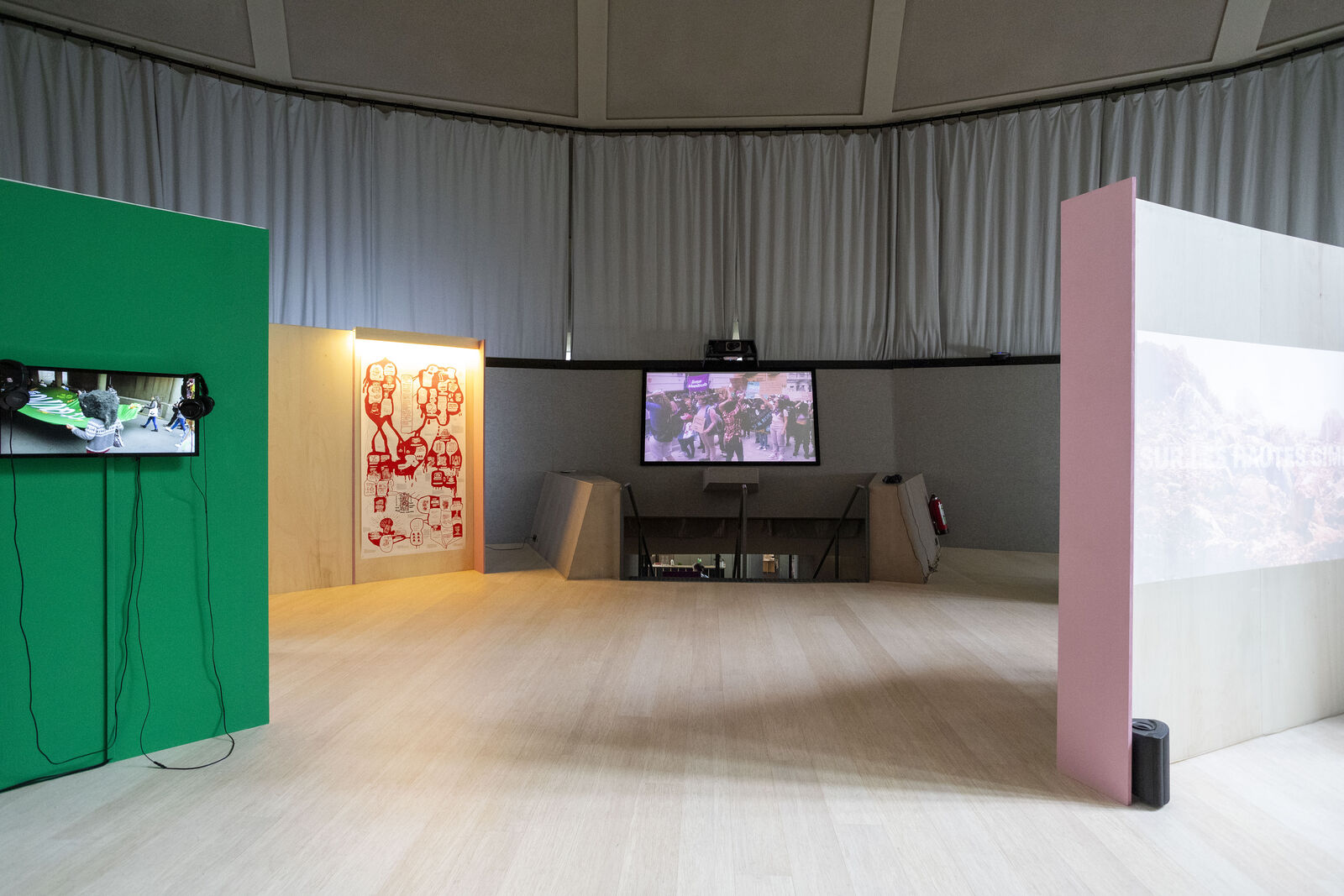
Photos: Chiara Barraco
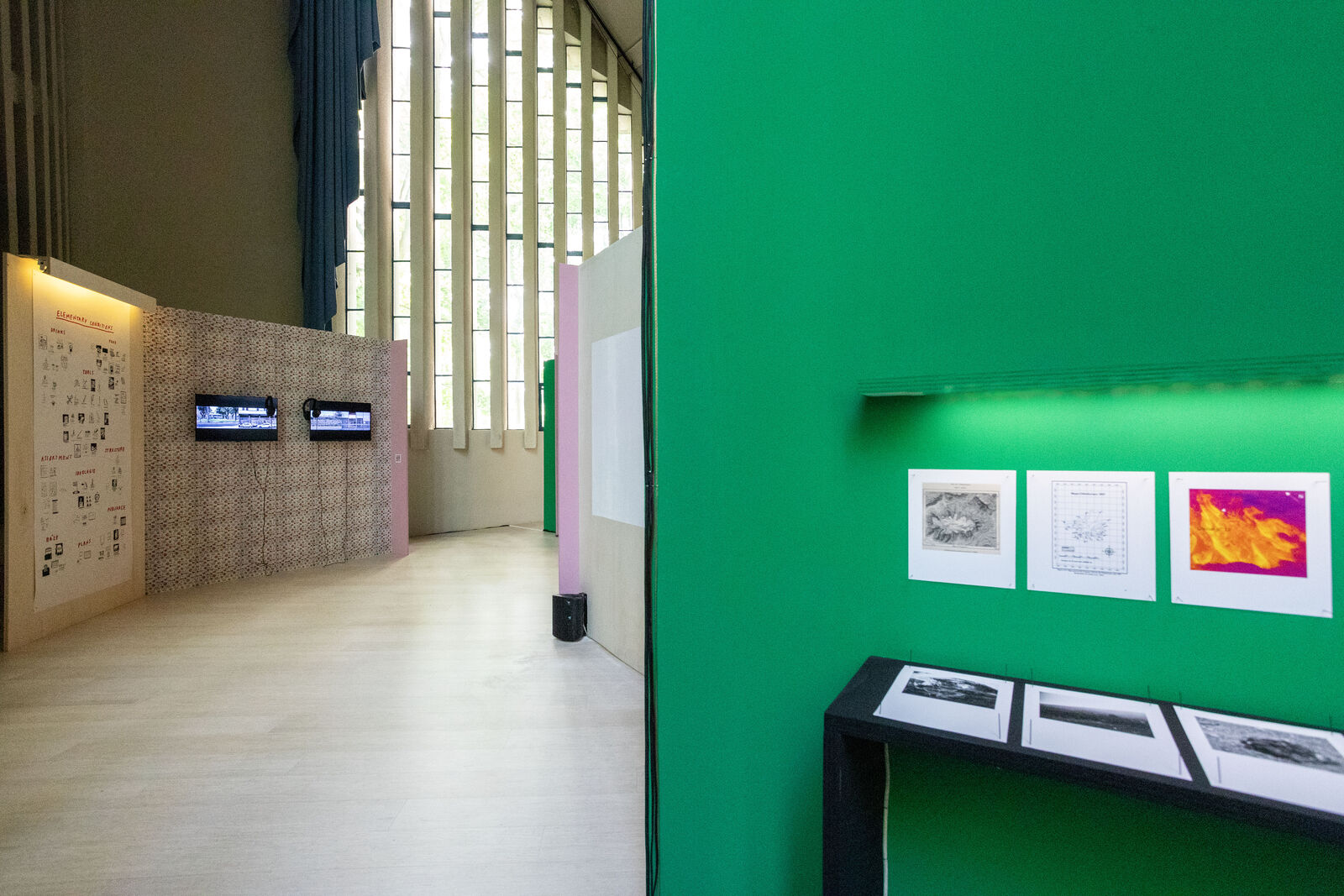
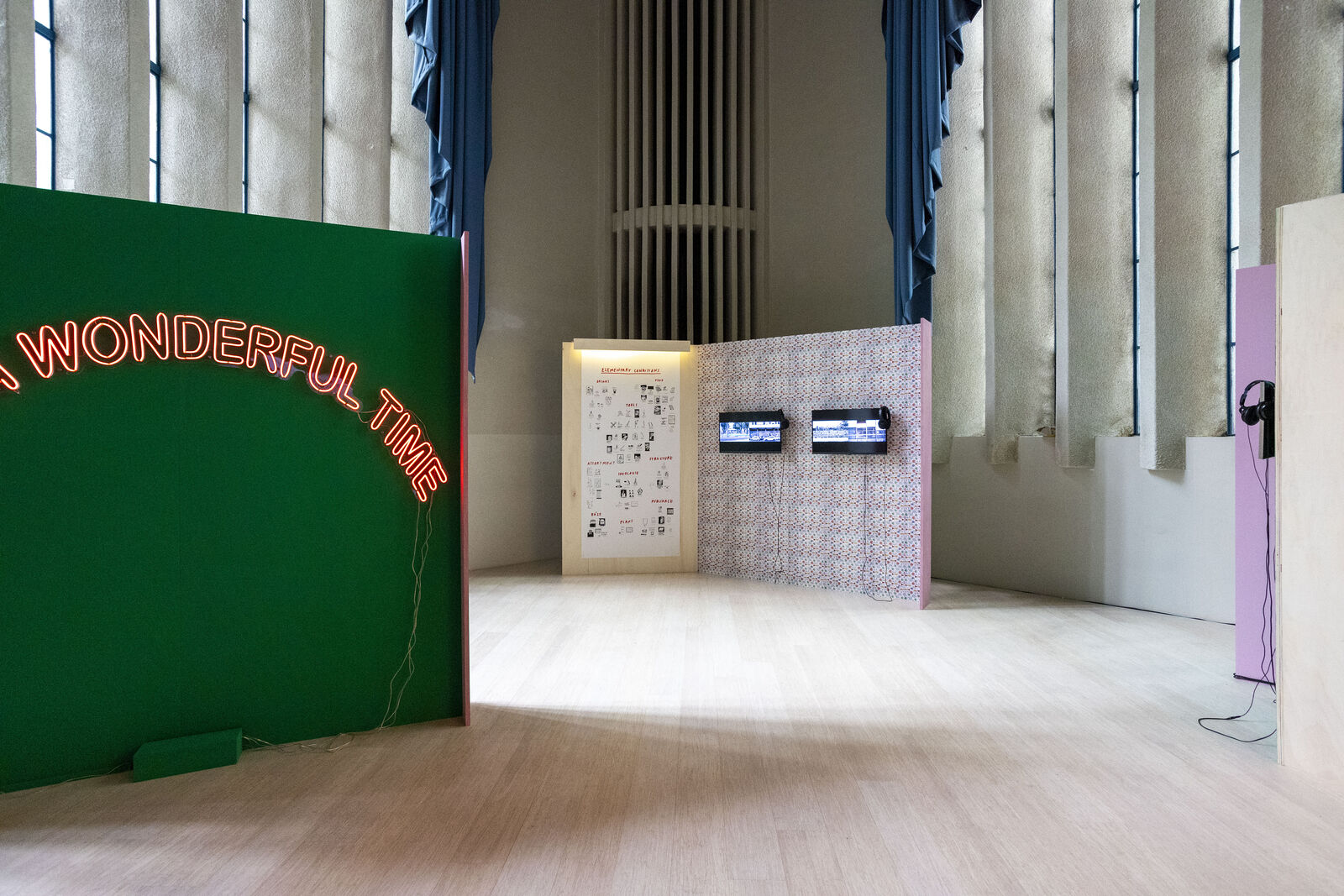
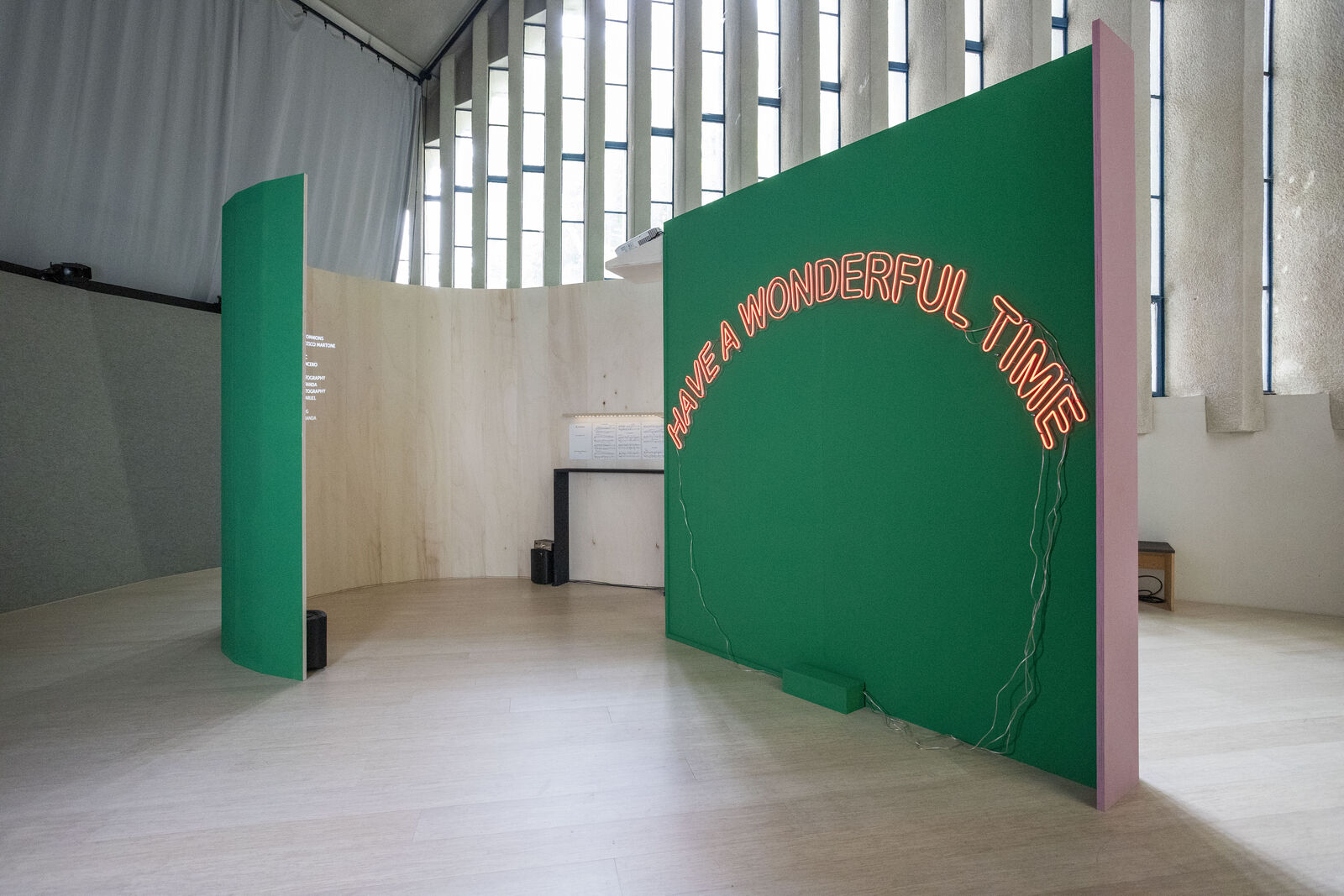
Sensing Interdependence is a project developed by Joint Cultural Initiatives, hosted and produced by de Appel and supported by the Directorate-General for Contemporary Creativity of the Italian Ministry of Culture under the Italian Council program (13th edition, 2024), which aims to promote Italian contemporary art worldwide.

